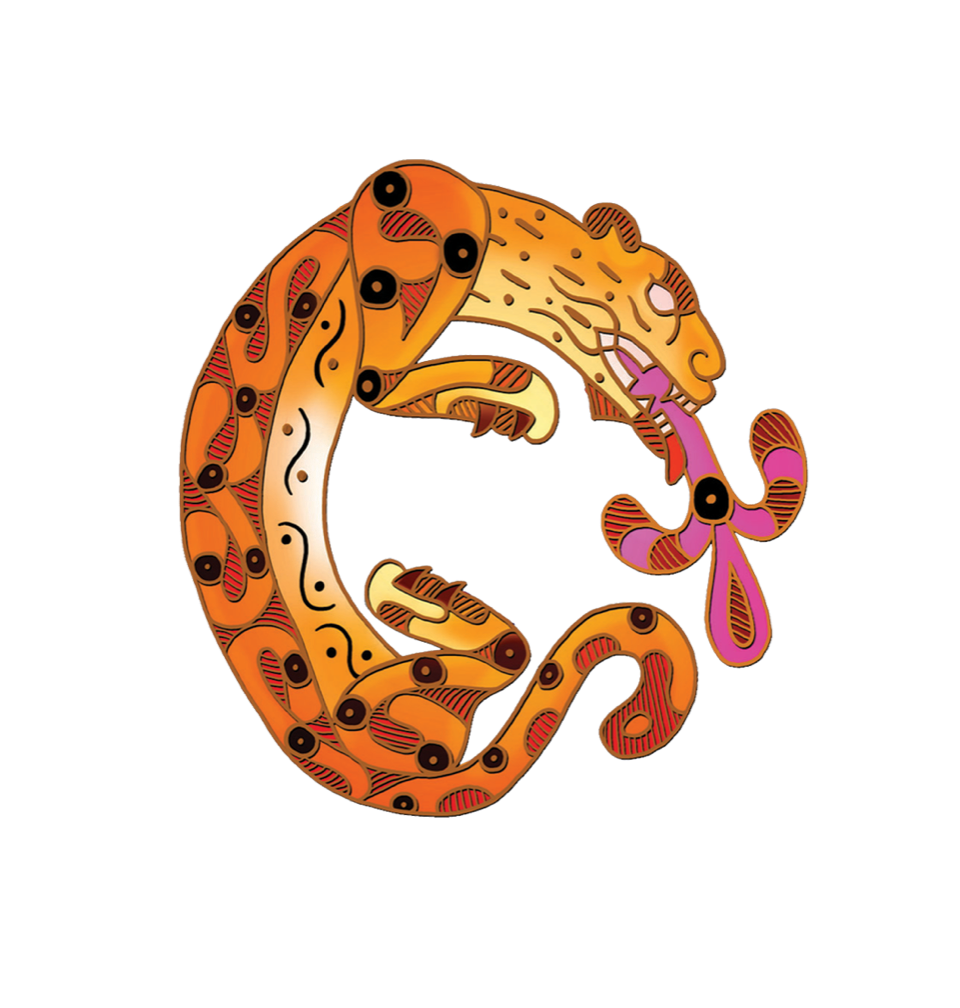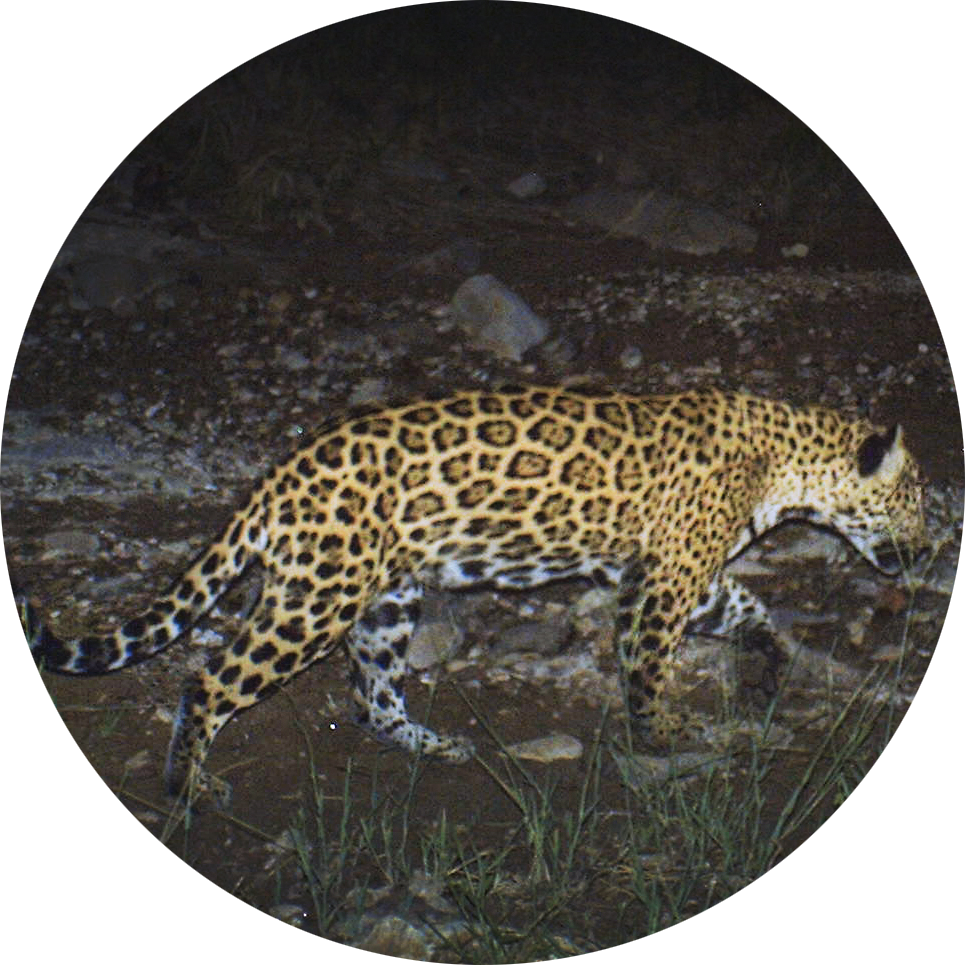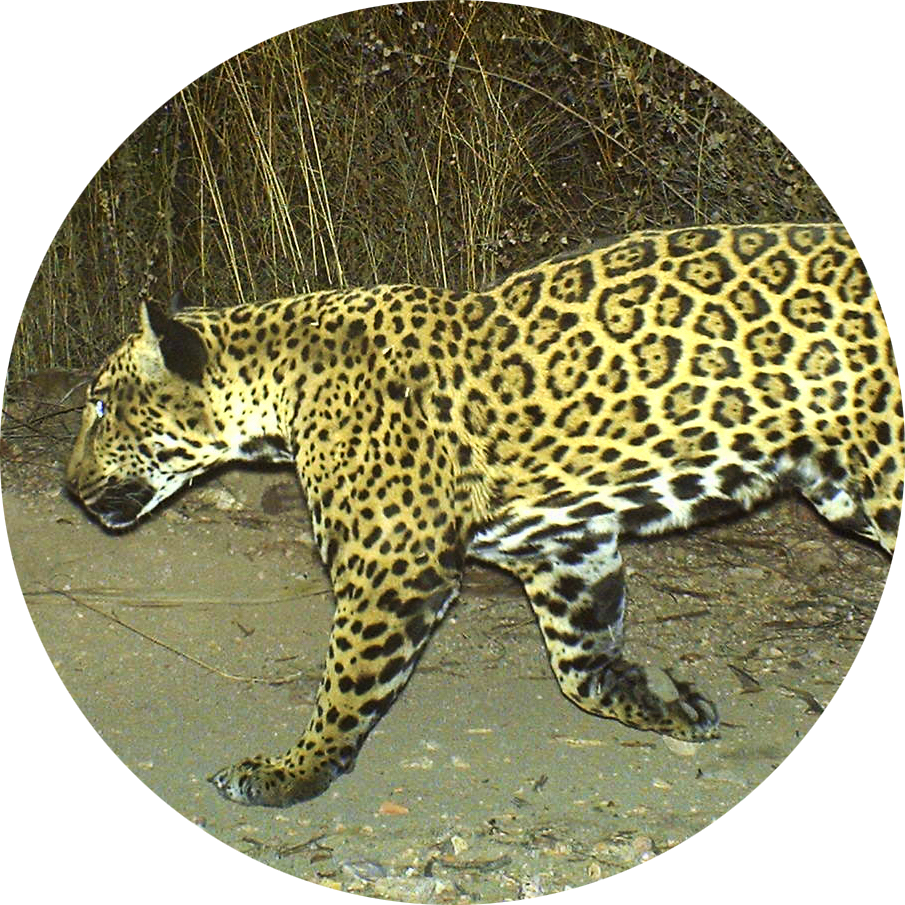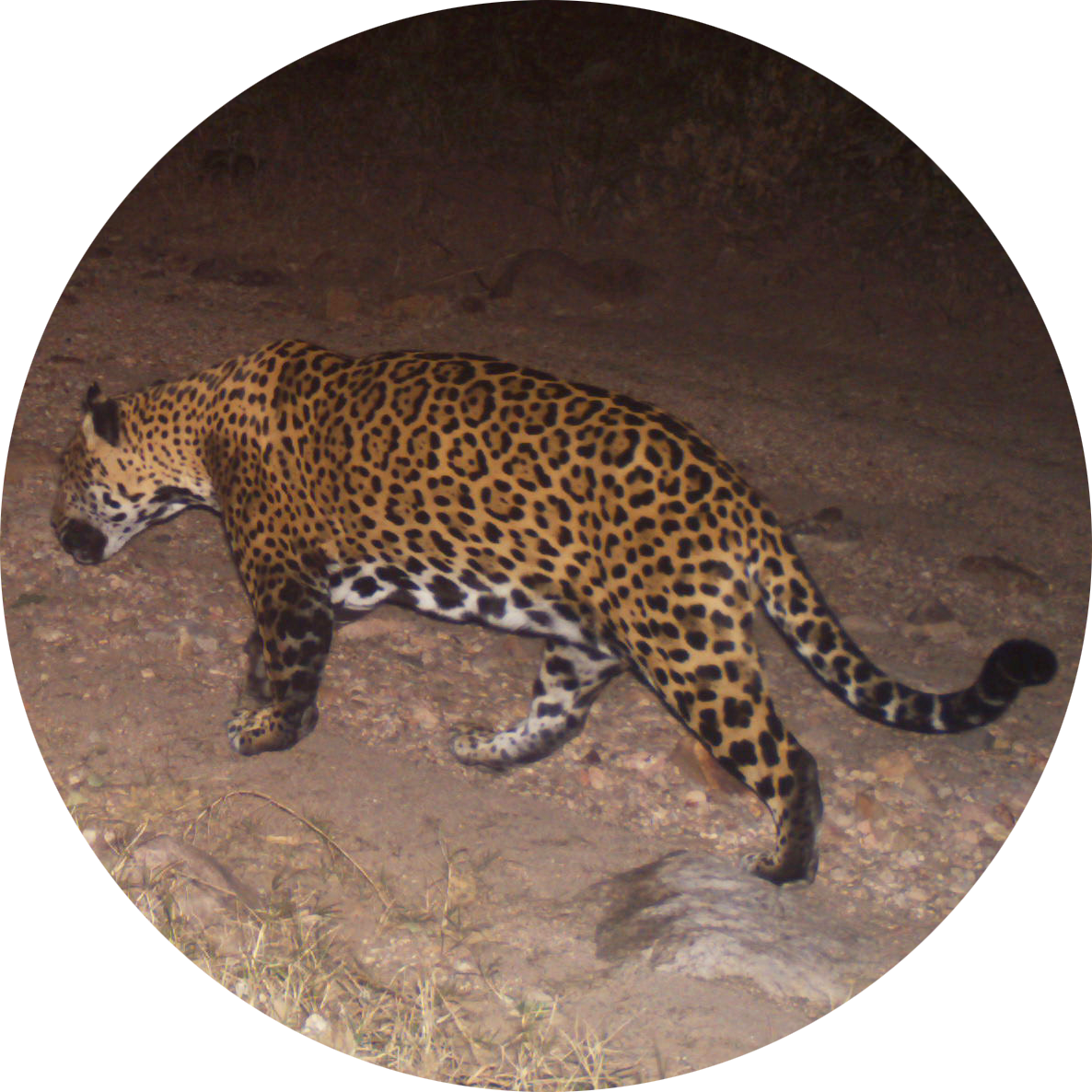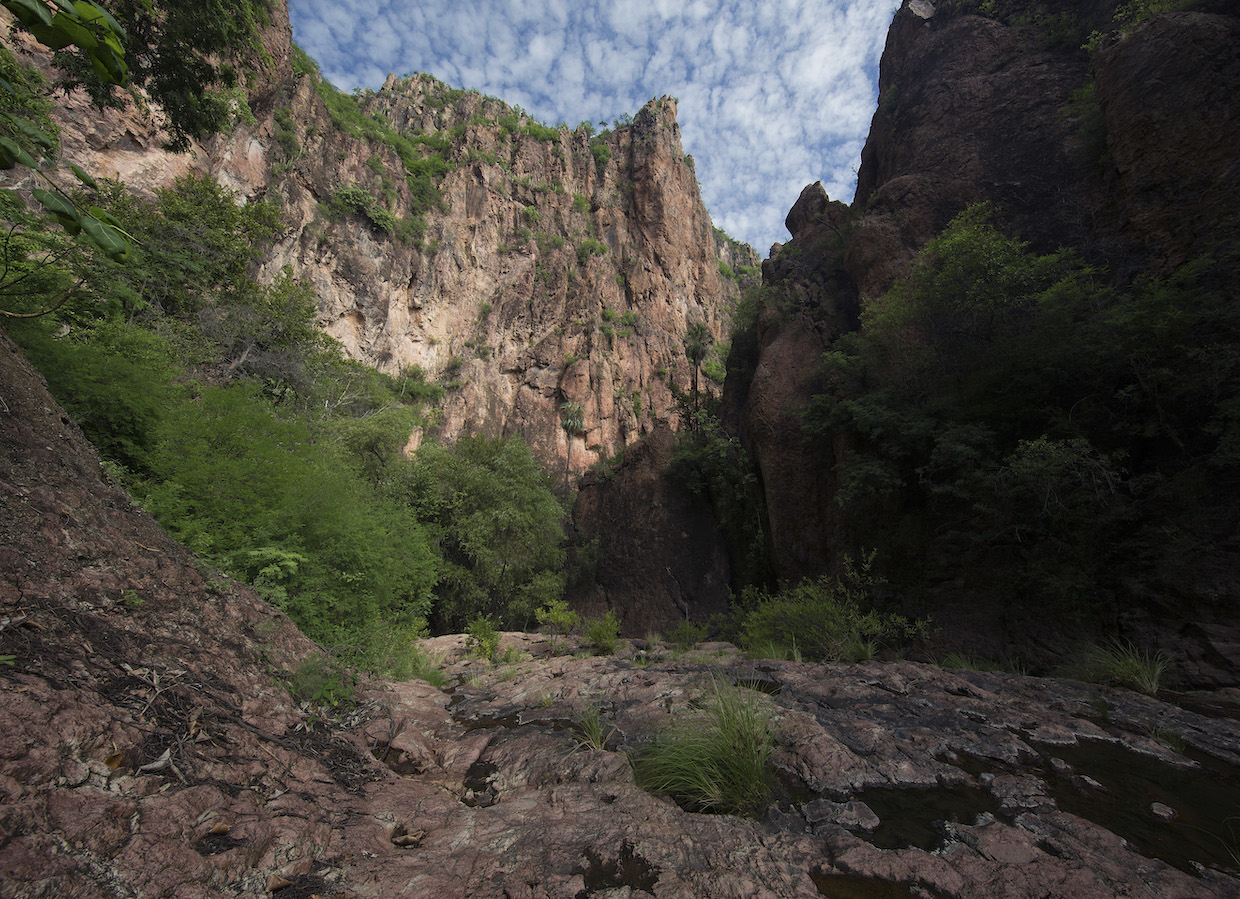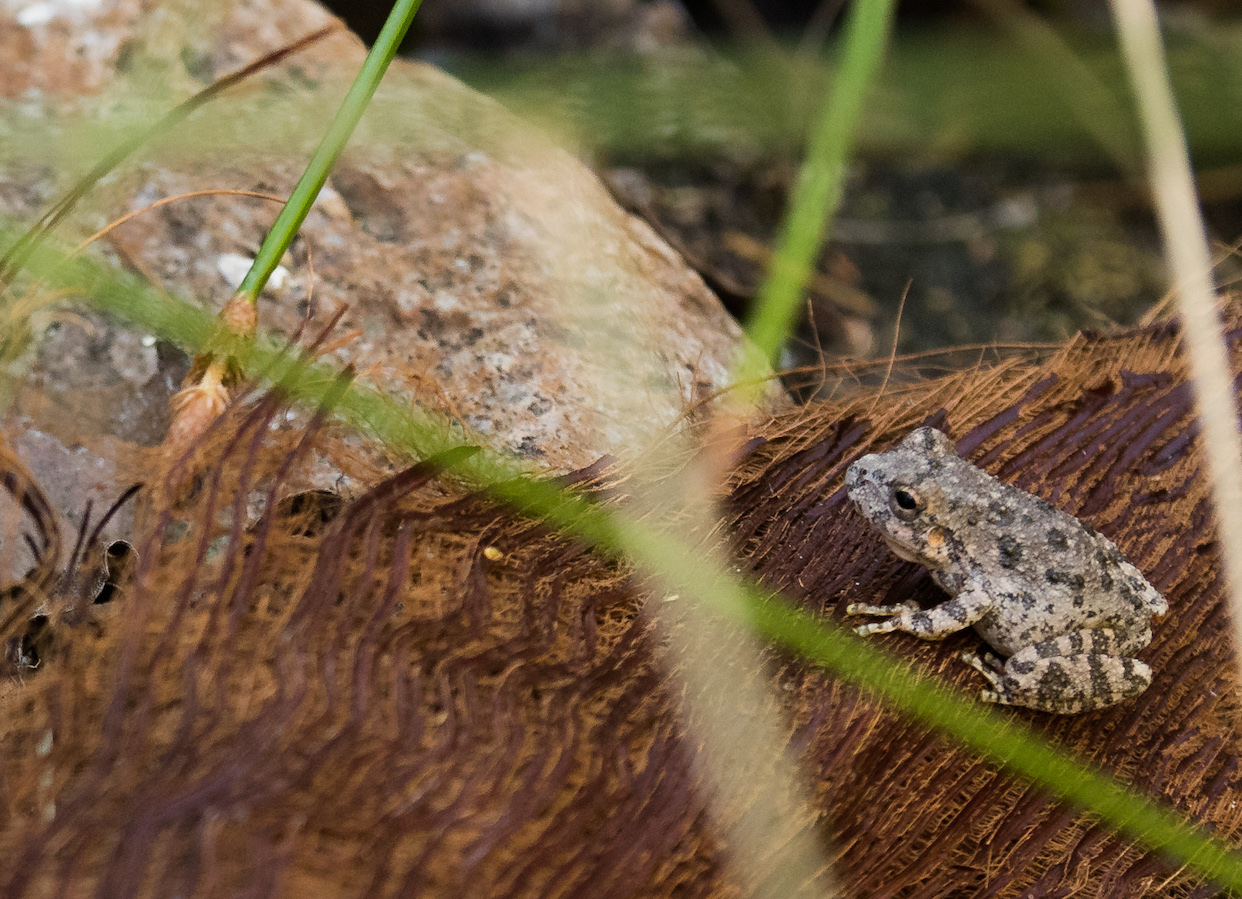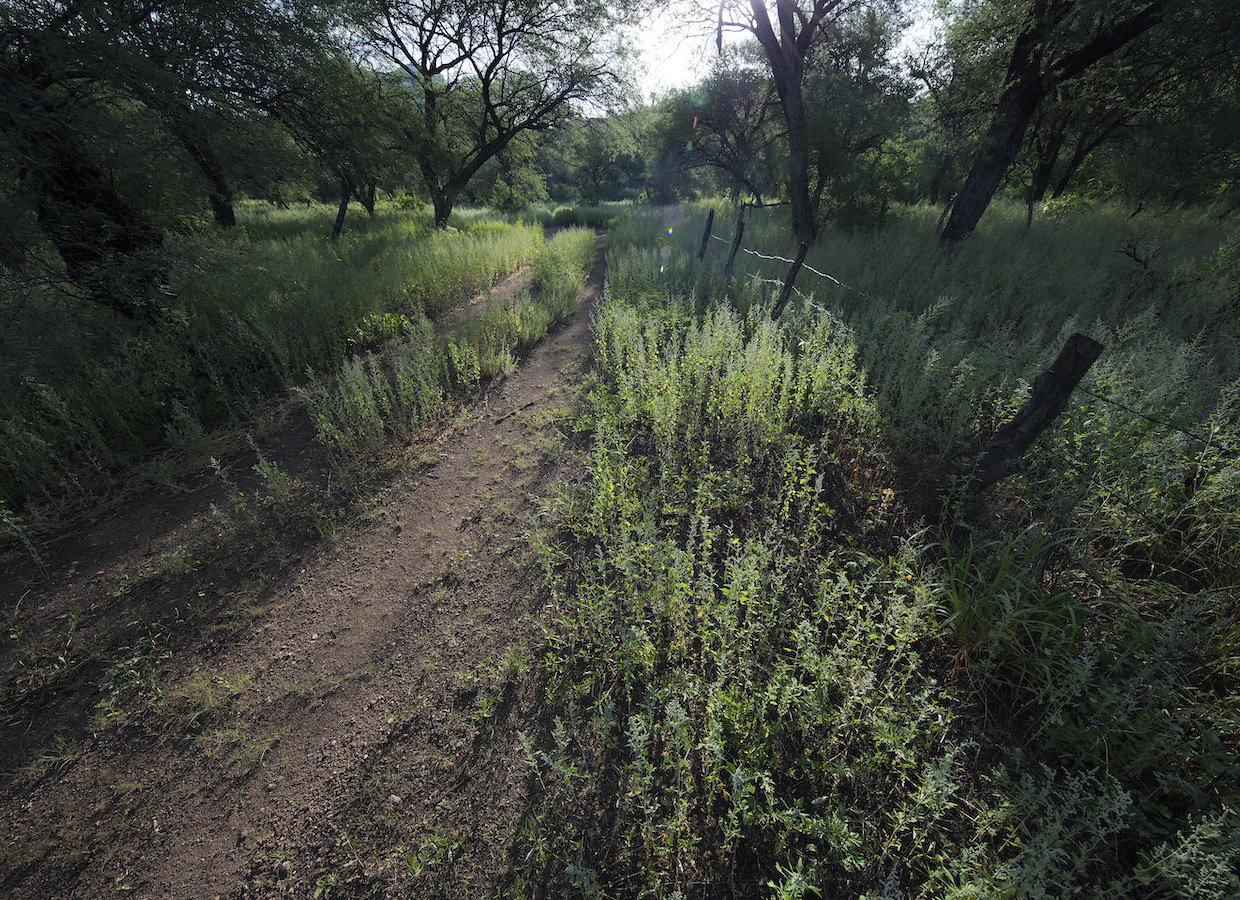
The foothills of the Sierra Madre Occidental begin to climb skyward a short 125 miles south of the U.S.-Mexico border. Here, jaguars move freely across a remote, rugged landscape that includes the over 56,000-acre Northern Jaguar Reserve.
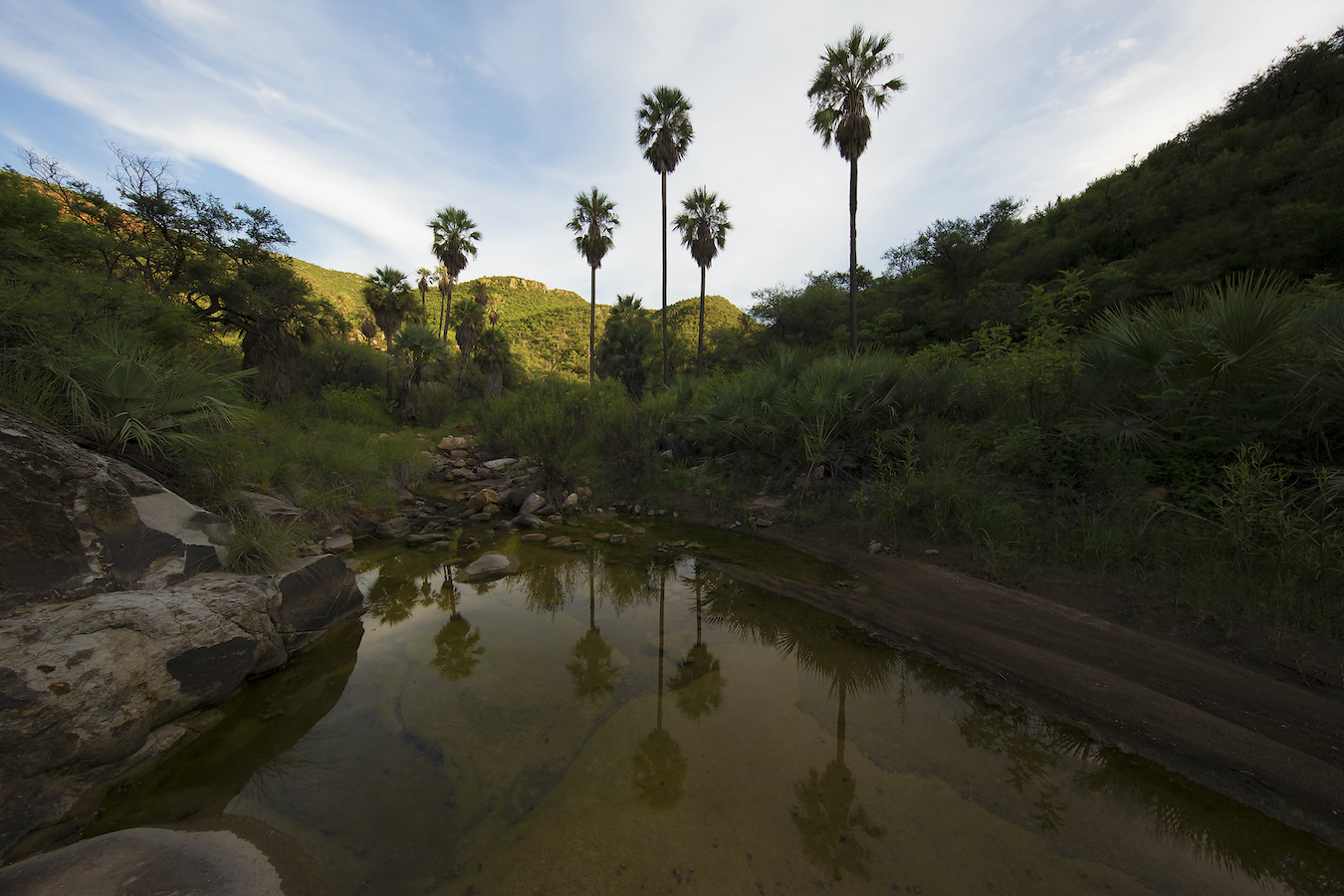
The reserve has been hailed as a place of discovery.
There are oak- and palm-dotted perennial streams, deep canyons, sheer cliffs, and jagged mountains. A noticeable highlight is no light pollution or road noise. Arriving at dusk, it is possible to count more than a dozen mountain peaks in the distance without a single electric light visible. The number of stars in the sky is dramatic. And as night falls, a symphony of wild sounds awakens.
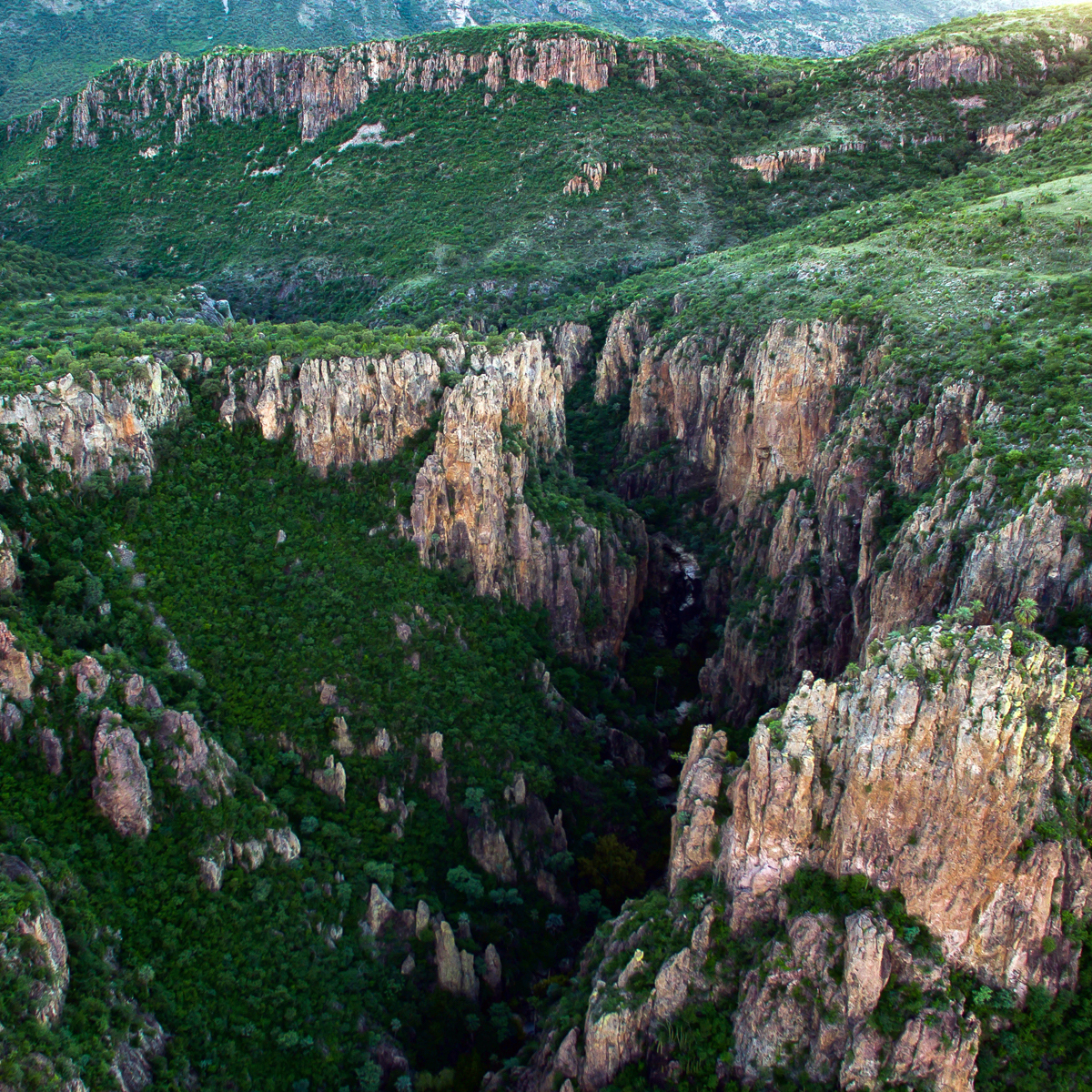
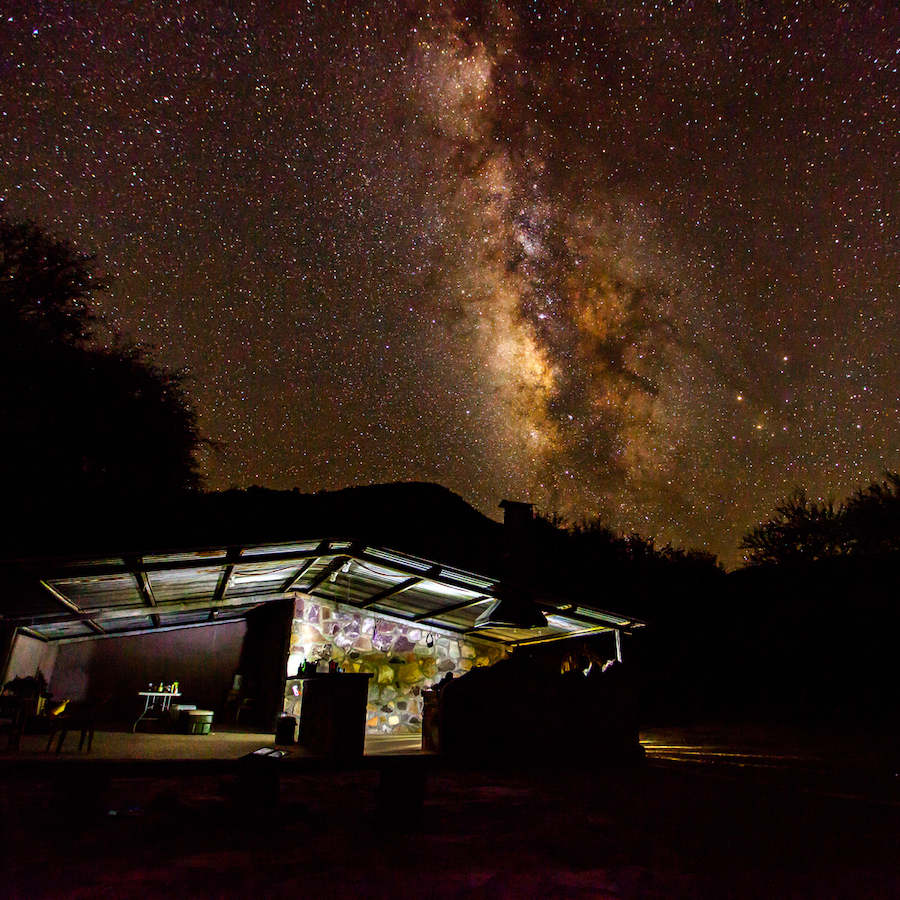
With wildlife in decline around the world, the reserve provides a much-needed refuge where it is possible to touch and taste life uninterrupted. From the birds and bats flying overhead to the small arachnids looking for a place to burrow, the reserve is teeming with biodiversity.
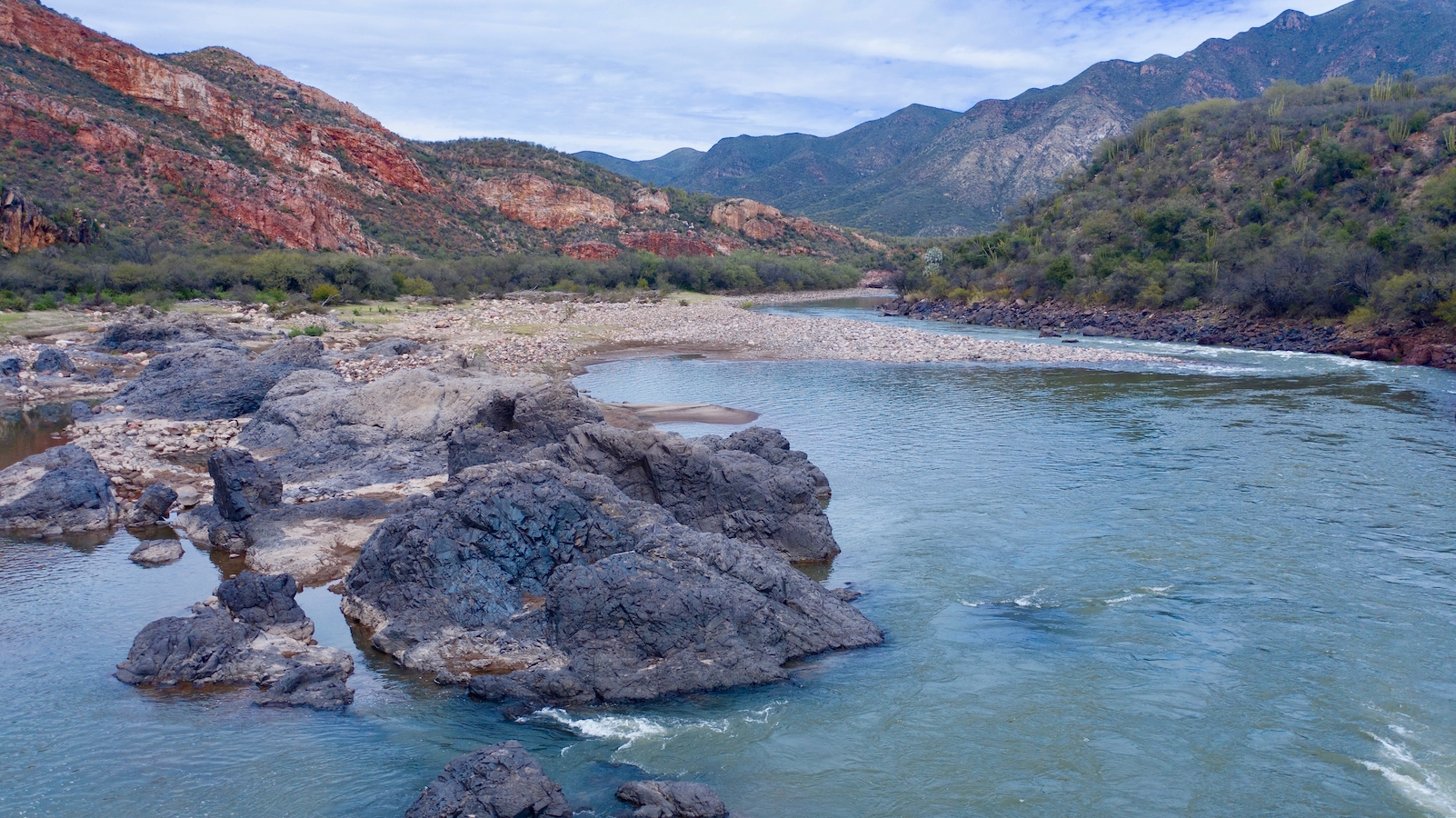
Frontage along northern Mexico’s longest undammed river, the Río Aros, attracts a wide range of species
The wilderness character is one aspect that makes this good jaguar habitat. The reserve is uniquely positioned where foothills thornscrub, desert vegetation, tropical deciduous forest, and oak woodlands intersect. Palm trees, columnar cacti, agaves, and chiltepines are mixed with a profusion of green, brown, and white-barked trees.
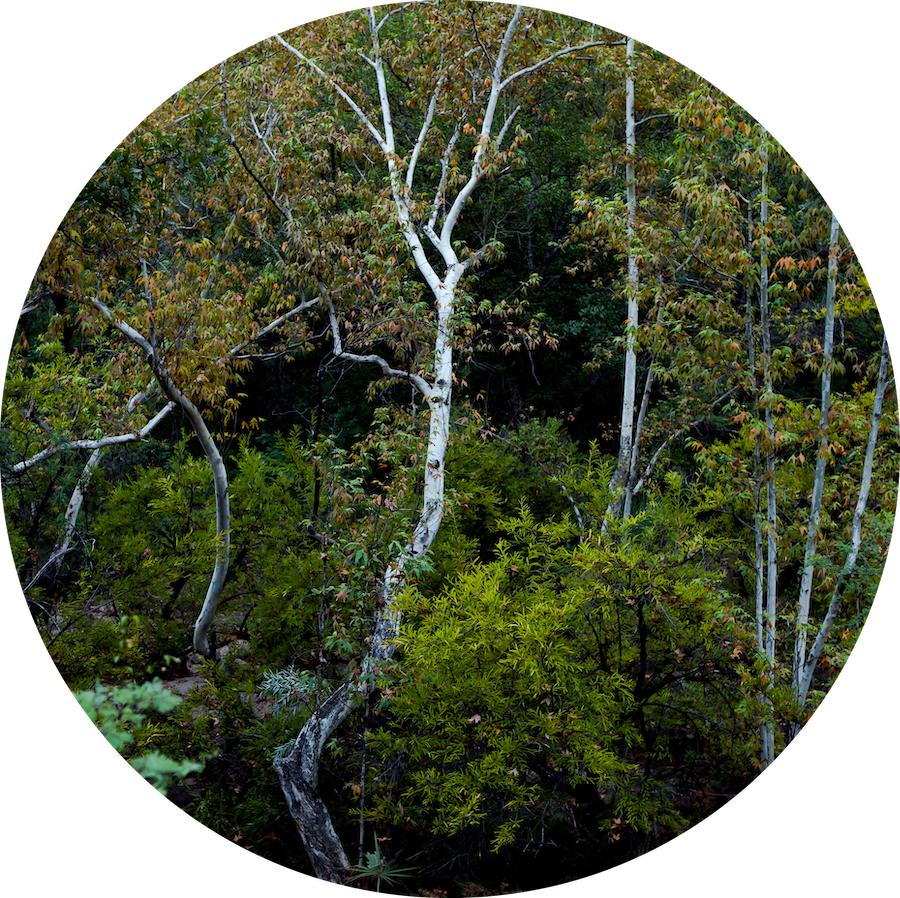
After the summer rains, the landscape is completely transformed from the dull, gray dry season. Water flows in every direction, countless waterfalls emerge, and tranquil pools provide a spot to rest. Jungle-like vegetation grows seemingly overnight, and wayfinding through this verdant maze becomes a nearly impossible task.
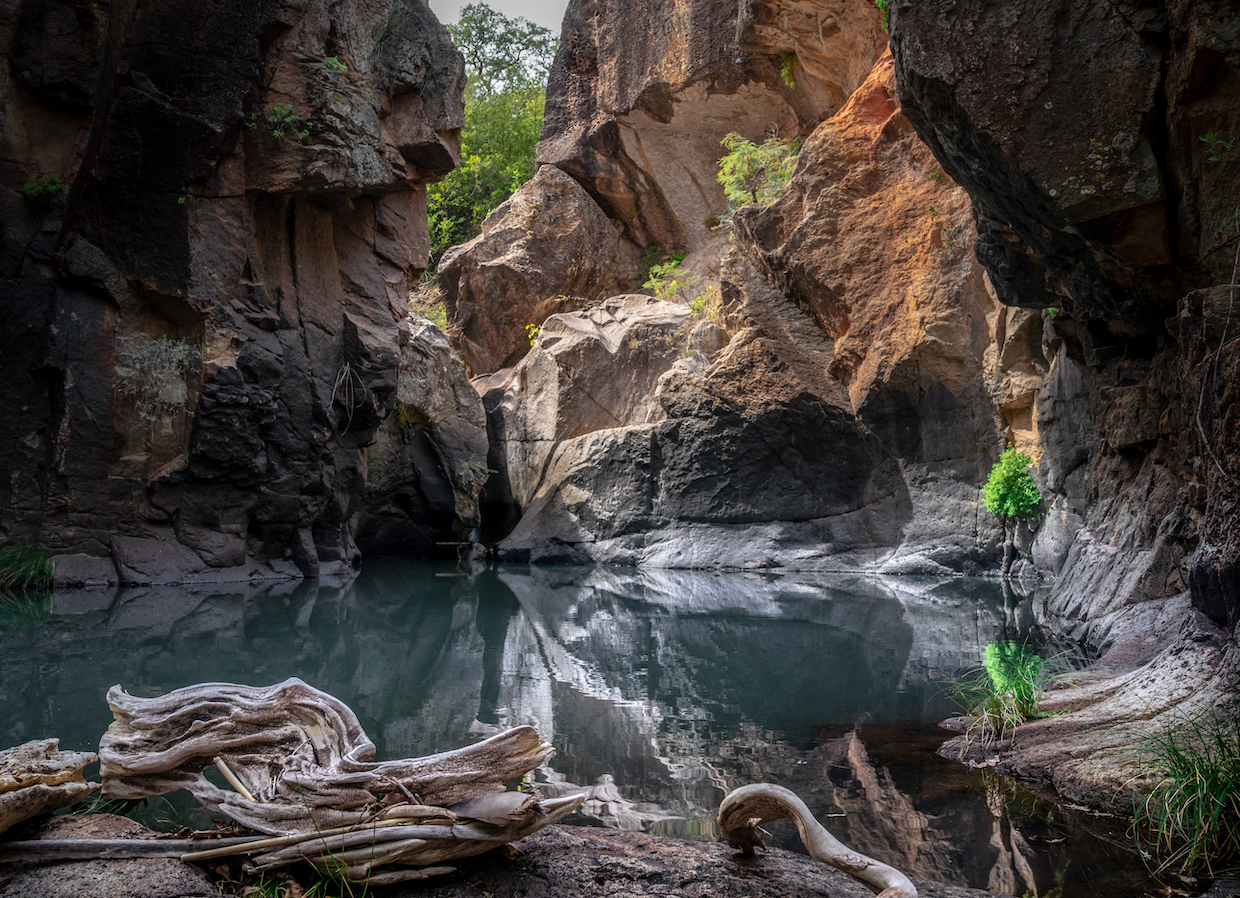
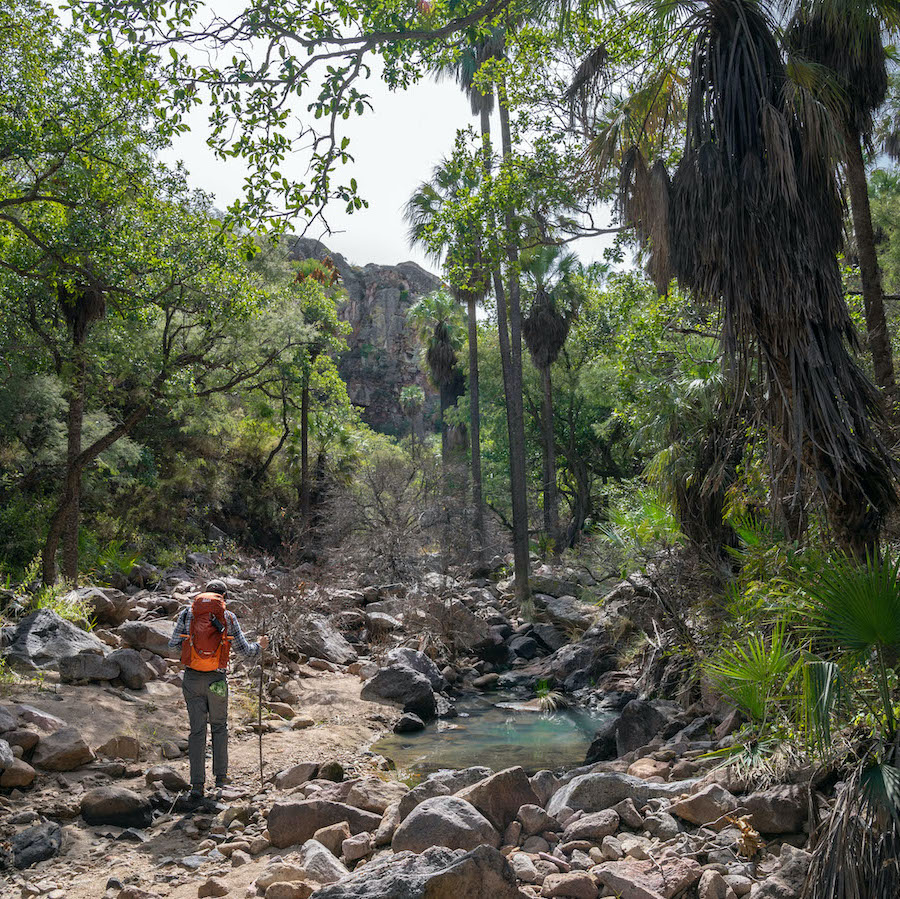
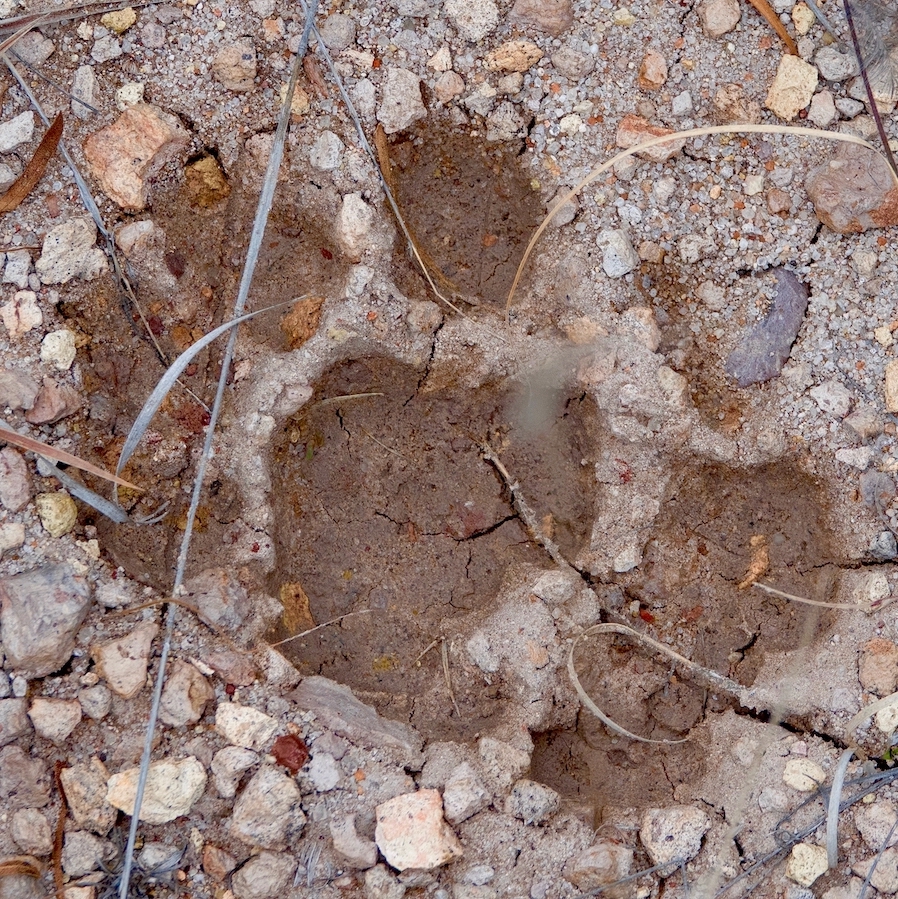
No matter the time of year, the jaguar’s presence can be felt when walking along the trails and arroyos, finding fresh tracks, viewing motion-triggered camera photos, or just out of sight in places with names like “Kitty City.”
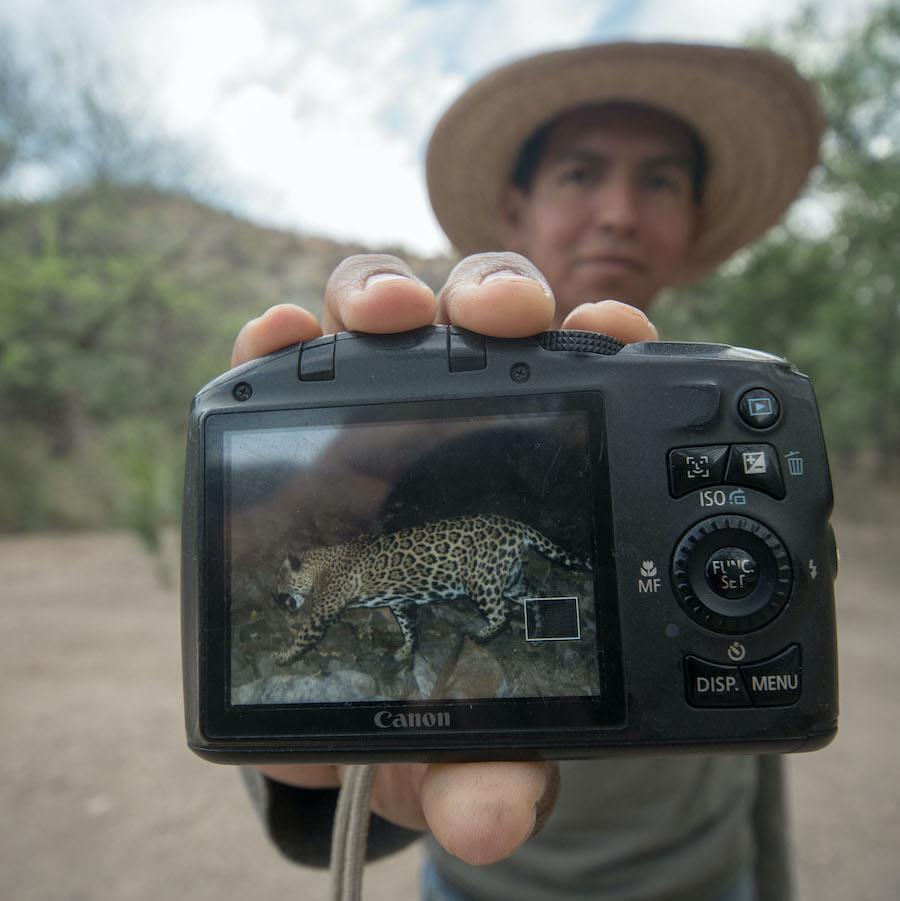
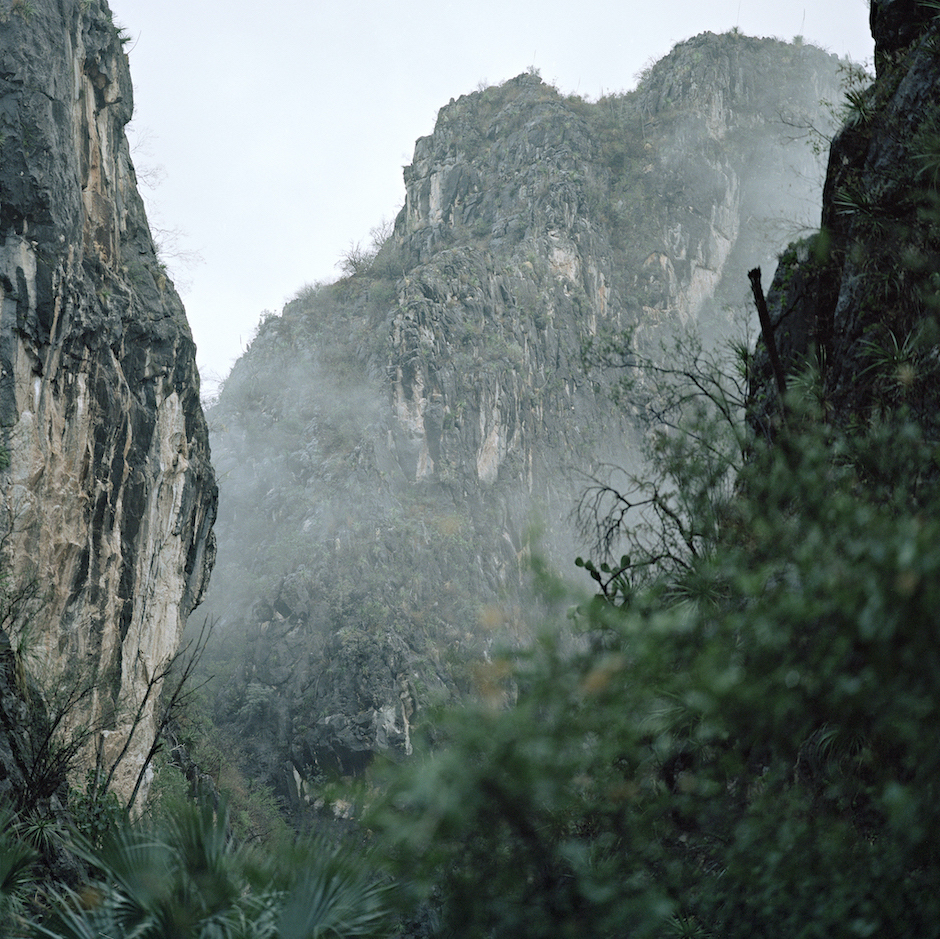
The reserve is the centerpiece of our work and boasts the highest number of northern jaguar sightings in recent years. We use motion-triggered cameras to help us “see” wildlife, having photographed more than 80 jaguars on the reserve and Viviendo con Felinos® ranches.
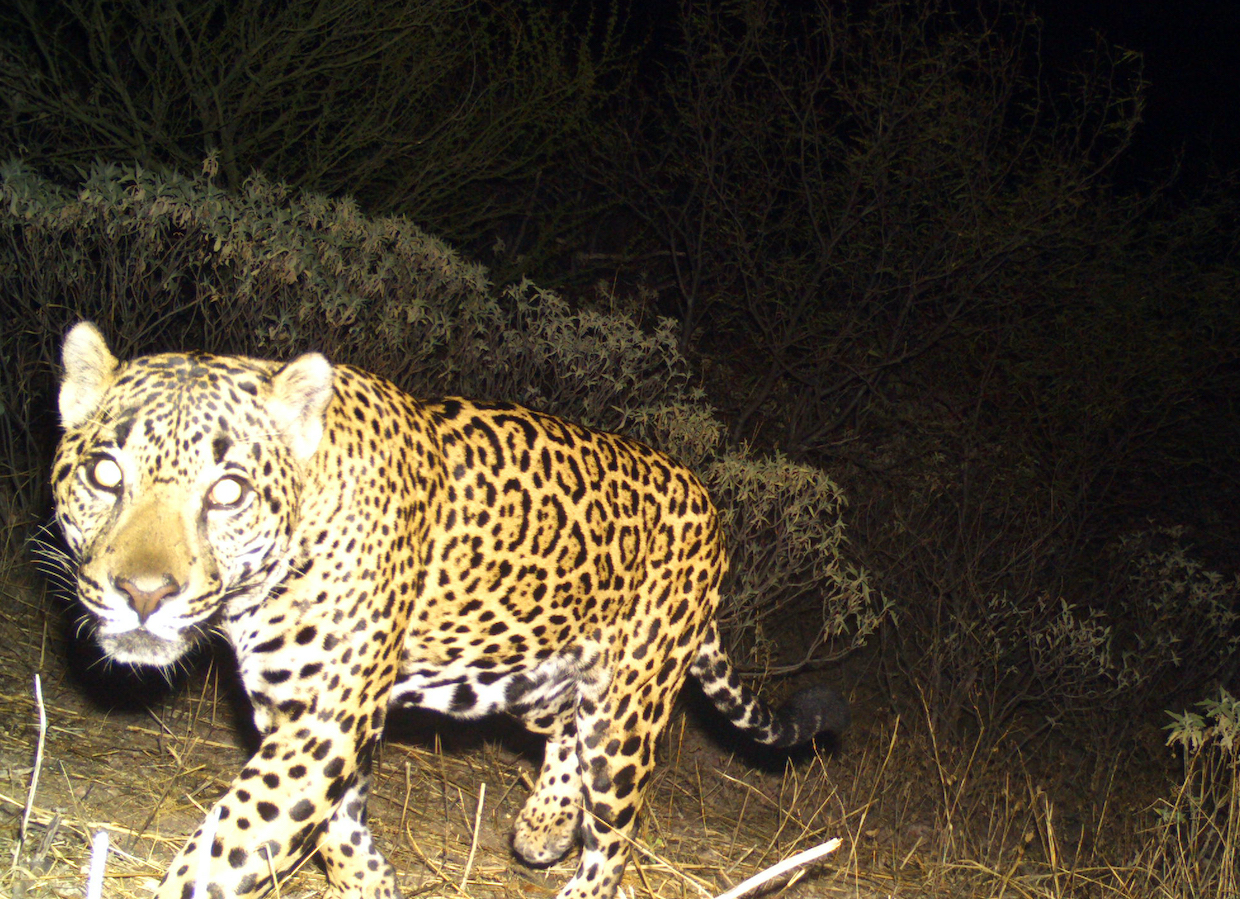
Jaguars in this region are critically endangered, with an estimated population of 80 to 120 individuals
Some of these jaguars are just passing through. Others take up residence and make the reserve their home. We have welcomed the birth of jaguar cubs and have watched young female jaguars grow to adults with cubs of their own. For a mother jaguar, this is a safe place where she can tuck her cub away in a den until large enough to venture out on its own.
Jaguar Portraits

Corazón
Corazón was born on the reserve, and as it grew with her, she raised at least three litters of cubs. …
Libélula
Libélula was the star of our earliest jaguar videos and is the matriarch across the entire protected area. …
Zapatos
Zapatos is the second-oldest jaguar in this region, and his story is one of resiliency and great wanderings. …
We had long assumed there was breeding on the reserve; there were often signs of it. In the reserve’s early years, we would observe male and female jaguars passing in front of the same cameras, in the same locations, only hours or days apart.
Fast forward, and our cameras have now filmed two different pairs of jaguars while mating. The first of these videos was one in a million – until it wasn’t. Clearly our cameras are well placed, and these behind-the-scenes views suggested jaguar cubs were on the horizon.
Caza and Osman, 2013
Luisa and Elvis, 2018
Three other jaguar couples have been photographed or filmed together. We know at least two of these occasions led to the pitter-patter of tiny pawprints on the reserve. More than anything, snapshots of cubs beginning to explore the reserve provide hope for the jaguar’s future.
Libélula and Compa, 2021
Published studies on jaguar and ocelot survival and densities have revealed that the protections provided by the Northern Jaguar Reserve and Viviendo con Felinos® ranches are working in favor of feline populations.
RESERVE GUARDIANSHIP


The backbone of the reserve is our team of biologists, field technicians, and vaqueros who mirror the strength and grace of the jaguars we protect. We know where the jaguars roam and diligently follow their tracks and trails. We travel through areas so remote, it is unlikely another human will pass that way for months, if not longer.
The terrain is not for the faint of heart, and it can be difficult to navigate in any form – on foot, horseback, or in a vehicle. There are very few roads, which come with cliffs, drop-offs, and steep climbs and descents. The road surface is constantly changing with the occasional flash flood, washed-out road, or dislodged boulder blocking passage.
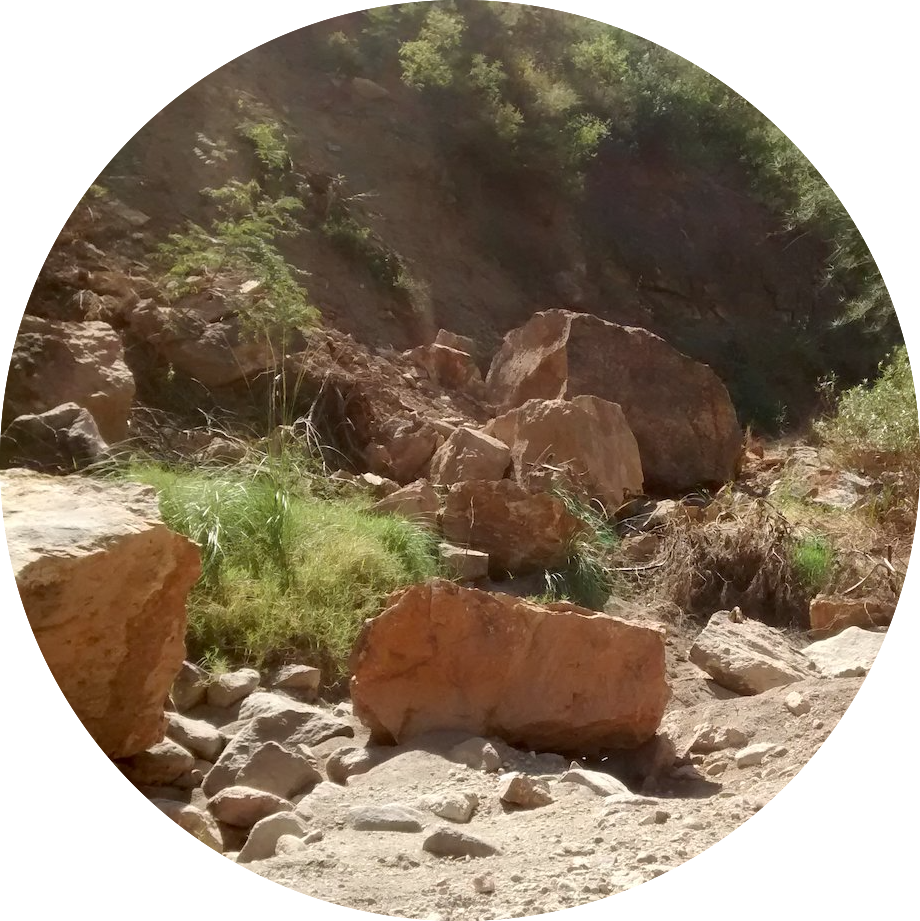
Our field team patrols the reserve to keep out poachers, maintains motion-triggered cameras, inventories the ecological health of the land and water, repairs fences to keep out trespassing cows, performs restoration projects, and cares for the rustic buildings and basic infrastructure.
RESERVE DEVELOPMENT
The reserve is made up of properties purchased between 2003 and 2019. This permanently protected area must still grow to reduce poaching and other threats. Read more.
RESEARCH
Beyond felines, the reserve protects migratory birds, bats, and butterflies, as well as rich communities of amphibians, reptiles, insects, and plants. Read more.
RESTORATION
There are areas of the reserve that need focused restoration treatments. Our rehabilitation efforts show how providing a safe haven for jaguars takes many forms. Read more.
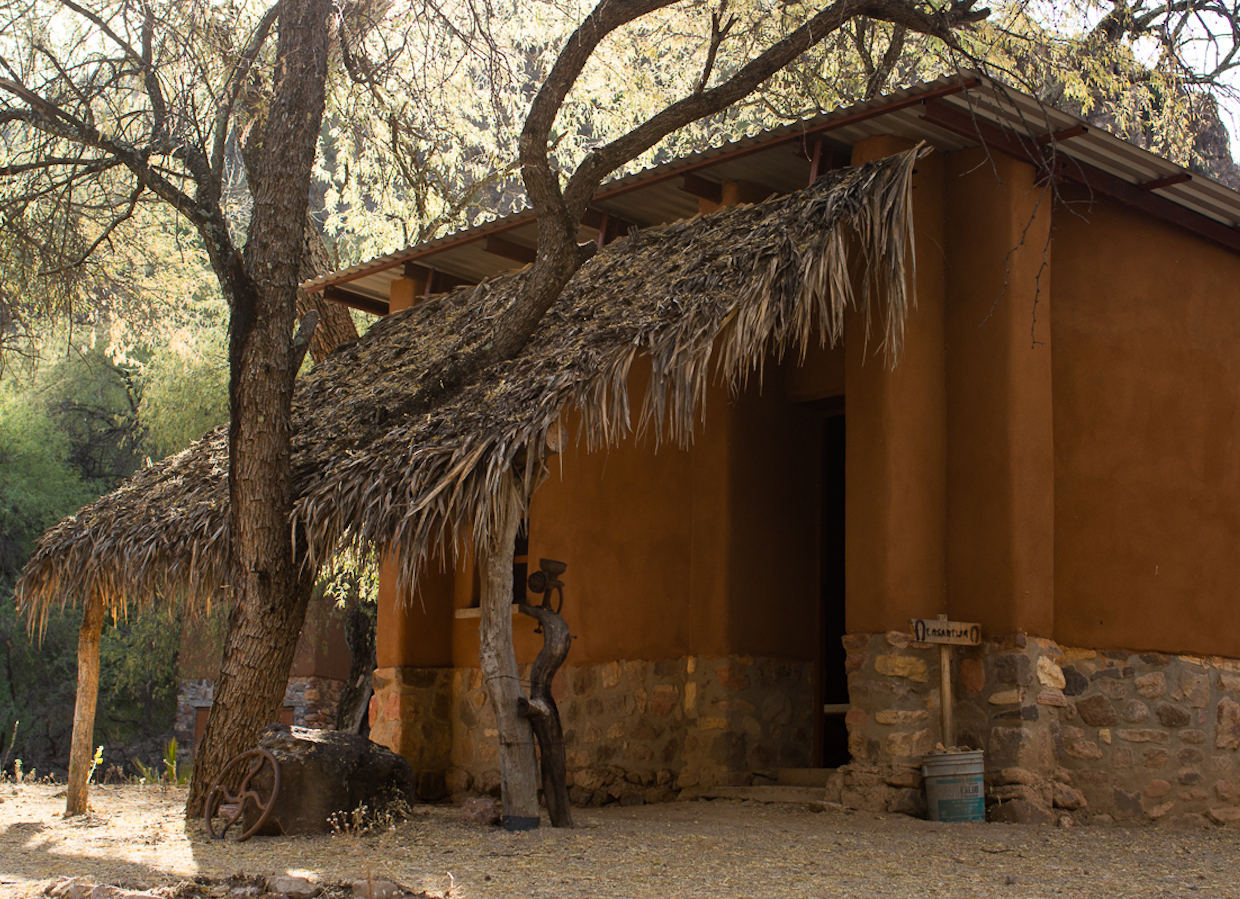
With sweltering temperatures for half of the year, food will spoil quickly, biting insects can be plentiful, and there is no cooling except for a dip in the river. To make longer field stays possible, we upgraded former ranch camps with solar-powered lights and refrigeration, sleeping cabins, hot showers, outhouses, and water tanks. We strive to have a light footprint, blend into the landscape, and use ecologically friendly and local materials.
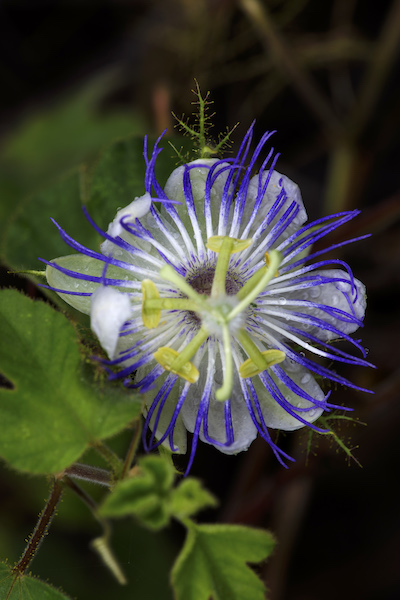
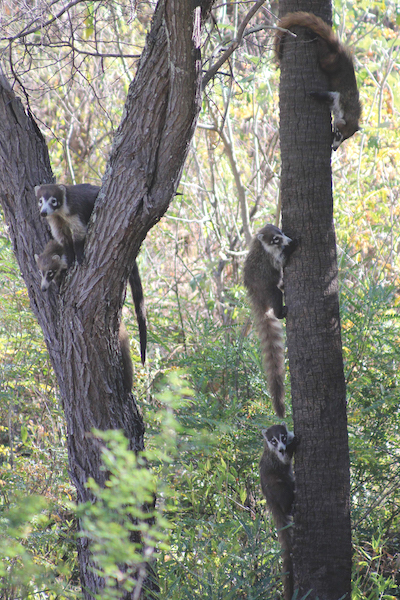
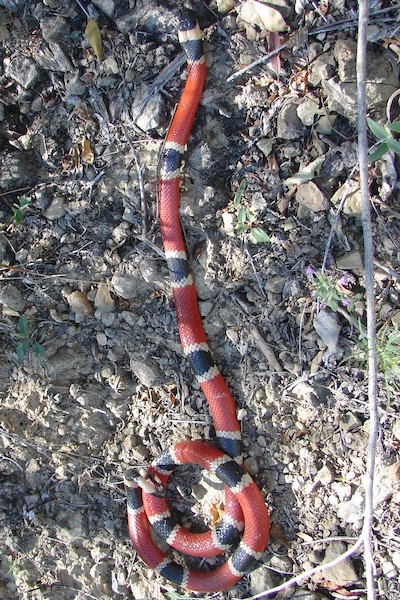
Our inspiration resides on the reserve. Every day, we discover the rewards of spending time in this expansive setting: Passionflower vines grow wild on the hillsides; a mother coati ambles by with her young; a coral snake slithers off into the bushes. We use these experiences, combined with thousands of pictures from our cameras each month, to fine-tune our understanding of how to best safeguard this land and its inhabitants.
Mountain lion mother with her young
The reserve is a priority area for conservation and essential to jaguar survival and recovery in the species’ northern range. It also provides an umbrella of protection to bald eagles, military macaws, Neotropical river otters, mountain lions, ocelots, badgers, and numerous other species of concern.

We appreciate how important it is to have large landscapes protected, not only for the jaguar, but for the many other heartbeats and diverse flora that exist.
Learn more in the film Where Jaguars Roam.
Photos: Brendon Kahn, Mikal Jakubal, Corbin Geiser, Hilary Lex, Lauren Strohacker, Braulio Duarte Arvayo, Rita Leal, Michelle Dillon, Susan Mittelstadt, Abi King

